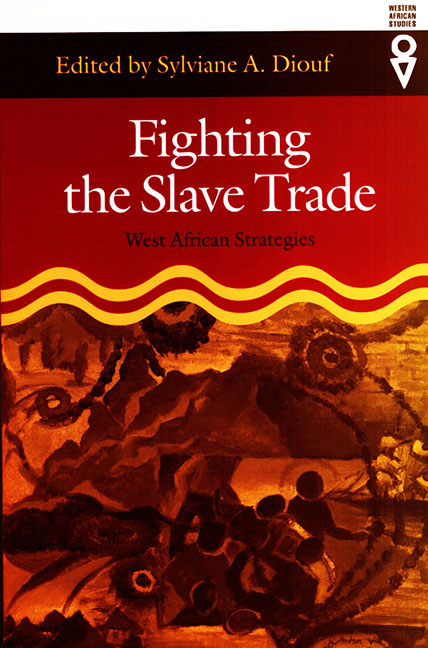Book contents
- Frontmatter
- Contents
- Preface
- Introduction
- PART 1 DEFENSIVE STRATEGIES
- 1 Lacustrine Villages in South Benin as Refuges from the Slave Trade
- 2 Slave-Raiding and Defensive Systems South of Lake Chad from the Sixteenth to the Nineteenth Century
- 3 The Myth of Inevitability and Invincibility: Resistance to Slavers and the Slave Trade in Central Africa, 1850–1910
- 4 The Impact of the Slave Trade on Cayor and Baol: Mutations in Habitat and Land Occupancy
- 5 Defensive Strategies: Wasulu, Masina, and the Slave Trade
- PART 2 PROTECTIVE STRATEGIES
- PART 3 OFFENSIVE STRATEGIES
- Epilogue: Memory as Resistance: Identity and the Contested History of Slavery in Southeastern Nigeria, an Oral History Project
- Contributors
- Index
4 - The Impact of the Slave Trade on Cayor and Baol: Mutations in Habitat and Land Occupancy
from PART 1 - DEFENSIVE STRATEGIES
Published online by Cambridge University Press: 30 August 2017
- Frontmatter
- Contents
- Preface
- Introduction
- PART 1 DEFENSIVE STRATEGIES
- 1 Lacustrine Villages in South Benin as Refuges from the Slave Trade
- 2 Slave-Raiding and Defensive Systems South of Lake Chad from the Sixteenth to the Nineteenth Century
- 3 The Myth of Inevitability and Invincibility: Resistance to Slavers and the Slave Trade in Central Africa, 1850–1910
- 4 The Impact of the Slave Trade on Cayor and Baol: Mutations in Habitat and Land Occupancy
- 5 Defensive Strategies: Wasulu, Masina, and the Slave Trade
- PART 2 PROTECTIVE STRATEGIES
- PART 3 OFFENSIVE STRATEGIES
- Epilogue: Memory as Resistance: Identity and the Contested History of Slavery in Southeastern Nigeria, an Oral History Project
- Contributors
- Index
Summary
THROUGHOUT THE SENEGAMBIAN KINGDOMS the European presence gave rise to a new era, leading to the disruption of the economic, political, and social life of most of the states of this region. After the rerouting of trade from the Sahara, the Atlantic coast became the new focus of commercial exchange. The economy, up to that point dominated by agricultural activity, entered a new phase due to the slave trade organized by the Europeans based at trading stations along the coast: Gorée and Rufisque for Cayor, Portudal for Baol. Cayor and Baol, two political entities of northern Senegambia, participated in this trade. These two frontier states, their destinies sometimes linked, were from that time subjected to profound changes. In addition to the destabilization of the economy, the political and social structures were severely shaken. Indeed, the insecurity encouraged by the hunt for human beings and the numerous ensuing wars caused both Cayor and Baol to sink into chaos for a long time. This situation reached its pinnacle in the seventeenth century under the reign of the Guedj family, who first took the throne in 1695. The leaders participated in the development of the slave trade with the assistance of a corps of warriors called captives of the crown, also known as ceddo. The ceddo, not always of slave origin, were granted privileges that allowed them to practice all sorts of exactions. Pillaged and kidnapped for ransom, the people of these kingdoms were at their mercy.
European sources, as well as the oral tradition, focus on the simmering crisis between the two kingdoms rather than the role played by the Europeans in the expansion of the slave trade. Information provided by the slaving powers, although substantial, contains gaps and biases. Today, at a time when certain reactionary theses are being developed, scholars of the slave trade cannot rely solely on written documents but need to turn to oral and archaeological resources as well. There is, for example, a close relationship between armed conflicts, the frequent abandonment of villages noted at the time of the slave trade, and the new habitat and modes of land occupancy created by the populations in response.
However, the people of Cayor and Baol were not passive agents; in the face of an increasingly dangerous situation, they devised strategies capable of slowing down the slavers.
- Type
- Chapter
- Information
- Fighting the Slave TradeWest African Strategies, pp. 50 - 61Publisher: Boydell & BrewerPrint publication year: 2004

